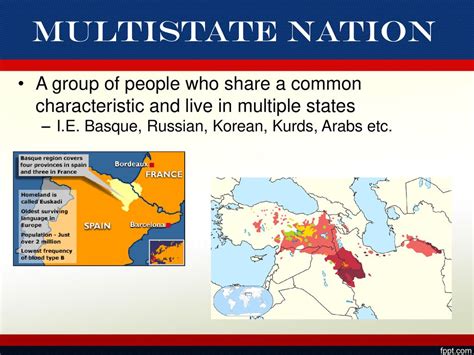Understanding the Concept of Multistate Nations

A multistate nation, also known as a federated state or federal republic, is a political entity characterized by a unique blend of centralized and decentralized governance. In such nations, power is shared between a central government and multiple subnational units, commonly referred to as states, provinces, or regions.
The division of power between the central and subnational units is typically enshrined in a written constitution, which outlines the respective responsibilities and authorities of each level of government. This constitutional framework ensures both the unity of the nation as a whole and the preservation of regional autonomy.
Historical Context and Global Examples
The concept of multistate nations has its roots in the ancient confederacies and unions of city-states. In the modern era, the United States became the first successful example of a large-scale multistate nation with the ratification of its Constitution in 1788. Since then, numerous countries have adopted federalist systems, including:
- Canada: A federation of 10 provinces and 3 territories
- Germany: A union of 16 states (Länder)
- Mexico: A federation of 31 states and Mexico City
- Russia: A federation of 85 federal subjects, including republics, regions, and autonomous districts
- Switzerland: A confederation of 26 cantons
Advantages and Disadvantages of Multistate Nations
Advantages:
- Preservation of regional diversity and autonomy: Subnational units retain control over certain aspects of governance, such as education, healthcare, and law enforcement, allowing for tailored policies that reflect local needs and values.
- Increased efficiency and effectiveness: The central government can focus on matters of national importance, while subnational units can address local issues with greater specialization and flexibility.
- Enhanced representation and accountability: Subnational units provide citizens with direct representation in local government, fostering a sense of ownership and participation.
- Reduced conflict and secessionist tendencies: The devolution of power to subnational units can mitigate tensions between different regions and promote national unity.
Disadvantages:
- Potential for uneven development: Regional disparities in economic and social development can arise due to different levels of capacity and resources among subnational units.
- Complexity and potential for deadlock: The division of power between different levels of government can lead to bureaucratic inefficiencies and political gridlock.
- Fiscal challenges: Multistate nations often face challenges in coordinating fiscal policies and ensuring equitable distribution of resources between the central and subnational governments.
- Administrative burdens: The maintenance of multiple layers of government can result in increased administrative costs and a duplication of services.
Innovative Applications of the Multistate Nation Model
In recent years, the multistate nation model has been creatively applied in various contexts:
- European Union (EU): A supranational political and economic union of 27 member states, the EU represents a unique model of cooperation and shared sovereignty.
- United Kingdom: The devolution of powers to Scotland, Wales, and Northern Ireland has transformed the UK into a multistate nation within a unitary state.
- United Arab Emirates (UAE): A federation of seven emirates, the UAE combines centralized authority with considerable autonomy for each emirate.
Conclusion
Multistate nations offer a unique and complex form of governance that balances the benefits of centralized authority with the preservation of regional autonomy. By understanding the advantages and disadvantages of this model, policymakers and citizens can effectively engage in the design and implementation of multistate systems that promote unity, efficiency, and the well-being of its citizens. The examples and innovations discussed in this article demonstrate the adaptability and ongoing relevance of the multistate nation model in shaping the future of governance worldwide.
Additional Information
Tables
Table 1: Population and GDP of Selected Multistate Nations
| Country | Population (2023) | GDP (2022, nominal) |
|---|---|---|
| United States | 334 million | $26.49 trillion |
| Canada | 39 million | $2.26 trillion |
| Germany | 84 million | $4.22 trillion |
| Mexico | 132 million | $1.43 trillion |
| Russia | 144 million | $1.78 trillion |
Table 2: Division of Powers in Multistate Nations
| Area of Responsibility | Central Government | Subnational Units |
|---|---|---|
| Foreign policy | Exclusive | Limited |
| Defense | Exclusive | Shared |
| Finance | Shared | Exclusive |
| Education | Shared | Exclusive |
| Healthcare | Shared | Exclusive |
| Law enforcement | Shared | Exclusive |
Table 3: Fiscal Challenges in Multistate Nations
| Challenge | Description | Potential Solutions |
|---|---|---|
| Horizontal imbalances | Regional disparities in fiscal capacity | Fiscal transfers, regional development policies |
| Vertical imbalances | Misalignment of revenue and expenditure responsibilities | Tax sharing, intergovernmental grants |
| Debt management | Coordination of borrowing and debt repayment | Fiscal rules, independent fiscal institutions |
Table 4: Innovative Applications of the Multistate Nation Model
| Application | Description | Example |
|---|---|---|
| Supranational cooperation | Sharing of sovereignty and pooling of resources | European Union |
| Asymmetrical devolution | Transfer of powers to specific subnational units | United Kingdom |
| Federalization of confederacies | Consolidation of independent entities into a multistate nation | United Arab Emirates |
